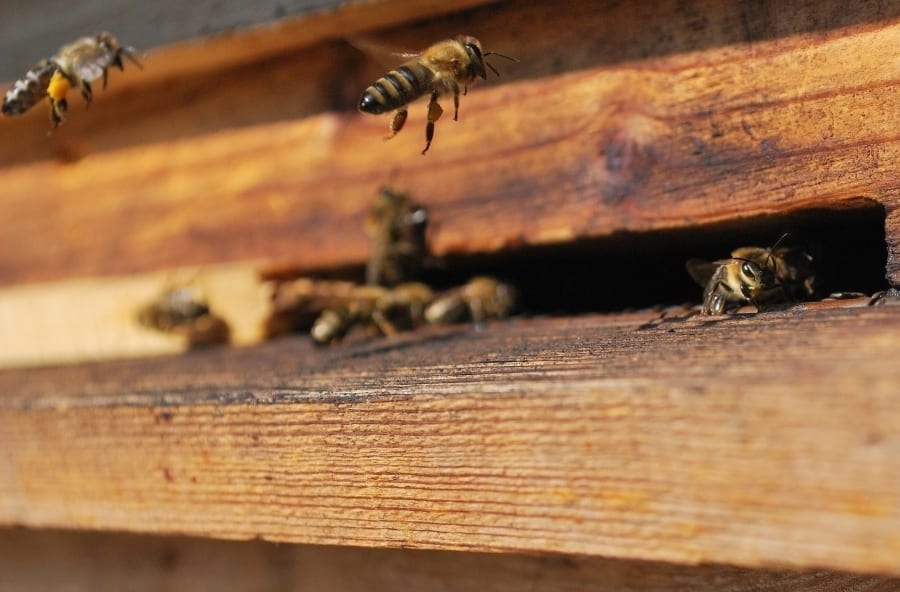
The Parts That Build Your Beehive
 In our last blog post, we touched on the different types of bees that make up the colony. While these little workers are incredibly important, their job wouldn’t be complete without the right apiary supplies to create a hive for them. Blythewood Bee Co. is happy to provide passionate beekeepers with the apiary supplies that they need to successfully raise honey bees and enjoy in their sweet, sweet honey. Below are all of the parts that will make up your beehive and what purpose they serve when it comes to the honey making process.
In our last blog post, we touched on the different types of bees that make up the colony. While these little workers are incredibly important, their job wouldn’t be complete without the right apiary supplies to create a hive for them. Blythewood Bee Co. is happy to provide passionate beekeepers with the apiary supplies that they need to successfully raise honey bees and enjoy in their sweet, sweet honey. Below are all of the parts that will make up your beehive and what purpose they serve when it comes to the honey making process.
The Separate Beehive Parts
Every beehive is going to be made up of eight different parts. We are going to visit the different parts from top to bottom and go over how each of these parts contributes to the overall process of making honey with your colony of bees.
The Hive Cover AKA Telescoping Lid
Protection to the hive is extremely important, and the way that we’re able to do that is with the hive cover. This is a roof of sorts to the hive, it protects the hive from any pests or hazardous effects of nature.
Inner Cover
Below the hive cover is going to be the inner cover. This is going to be made from wood and will sit on top of the supers. This cover, unlike the hive cover, has a whole that provides ventilation and insulation to the hive.
Supers
This is the part that most people imagine when they think of beekeeping. This part of your beehive is where the bees will store their honey. The supers are going to be either medium or shallow in depth, depending on the size of your hive. For the most part, supers will hold anywhere from 8 to 10 frames with roughly ¼ of an inch in between each frame. These frames can be made from wood and wax or plastic. Plastic foundation is typically coated with beeswax to allow greater acceptance. Plastic is much easier to use for the beginning beekeeper and is also reusable.
Frames
As stated above, frames are the used by the honeybee to build honeycomb. They use beeswax that is produced by a gland under their abdomen to construct honeycomb. This comb is where both larva and honey is stored. Honey can usually be found in the uppermost parts of the hive while eggs and brood are found in the lower chambers or “hive bodies”.
Queen Excluder
Honeycomb is used for both storing honey and keeping eggs, so what the queen excluder does is ensure that none of the honeycombs that is going to be used for honey is also going to be used for storing eggs. This is a pretty narrow screen but makes all the difference in the production of honey and maintenance of the honeybee population.

Hive Body
The hive body is going to be the place where the queen lives, lays her eggs and raises the brood. This is also where any honey that is stored as food for the colony will be stored. This part of your hive is going to look similar to the supers but will be deeper. They will both, however, have beeswax or plastic foundation to keep the bees comfortable and make raising their brood easy.
Bottom Board & Hive Stand
The bottom board of the hive is either solid wood or has a 1/8′ screen that provides a flooring for the hive, while the hive stand that keeps the hive above the ground will provide stability to the hive as a whole.
The various parts that make up the beehive for your honeybees colony are everything that is required to create a space where your bees can thrive. If you’re missing parts of your hive or are looking for replacements, Blythewood Bee Co. is the place to find them. We carry pieces that allow for your hive to be not only stable but thoroughly and easily put together so that you can quickly begin the process of maintaining bees. From the hive bodies and supers to the queen excluders and stands, we want to make sure that you have the best in the apiary supply business.
Browse our selection of high-quality parts online today, we can’t wait to be a part of your passion for beekeeping! If you have any further questions about the way that these pieces work together, feel free to reach out to us! We would be more than happy to help!



Leave a comment